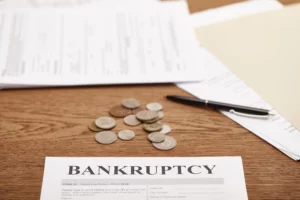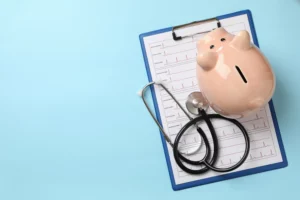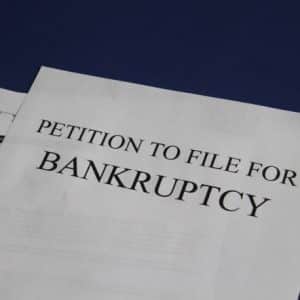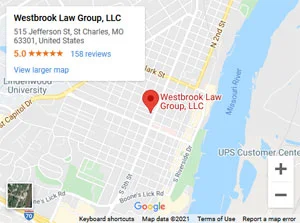Keep Your Retirement Bright In Bankruptcy!
Perhaps this is not the first time you have read an article after numerous searches of “How can I save my retirement savings in bankruptcy?” In St. Charles, Missouri, our clients frequently ask this question. In this article, we will address this and more.
Short Summary:
- Chapter 7 erases eligible debts, while Chapter 13 involves settling debts over three to five years based on income.
- Chapter 7 focuses on liquidation, whereas Chapter 13 emphasizes reorganization and structured repayment.
- Bankruptcy typically does not seize essential daily living items, retirement savings, or Social Security.
- Depending on assets like homes and their locations, the choice between Chapter 7 and Chapter 13 can have different implications.
- Determining the appropriate bankruptcy type depends on individual financial circumstances, debt nature, asset protection, and retirement income sources.
- Medical and credit-related liabilities, as well as Social Security benefits, can influence Chapter 7 eligibility.
- ERISA-compliant retirement funds like 401(k)s and IRAs are generally safeguarded from bankruptcy.
- However, there are specific limitations, such as IRA balances over $1,362,800 becoming accessible to creditors.
- In Chapter 7 bankruptcy, retirement payouts factor into income evaluations but are crucial for sustenance.
- Chapter 13 considers retirement earnings in determining unsecured debts for repayment plans.
Bankruptcy offers relief from crushing debt through two main paths. Chapter 7 lets you erase unsecured debts like credit cards but may involve selling some assets. Chapter 13 crafts a repayment plan, keeping your assets but demanding dedicated payments over several years.
Bankruptcy can be relevant to individuals in St. Charles, Missouri, who are facing financial difficulties and want to protect their assets or restructure their debts. Bankruptcy can offer them a chance to start over with a clean slate, or to repay their creditors in a manageable way.
What is Bankruptcy, and How Does It Relate to Retirement Savings?
Bankruptcy, in general terms, is a legal process that allows individuals or businesses to seek relief from overwhelming debts by either liquidating assets to pay off creditors or establishing a repayment plan under the protection of the bankruptcy court. Bankruptcy has implications for retirement savings, as certain assets and funds designated for retirement are typically protected or exempted from bankruptcy.
That means that residents of St. Charles, Missouri, who file for bankruptcy can often safeguard essential retirement savings, ensuring they maintain a financial foundation for their later years while navigating the complexities of debt relief.
Chapter 7 vs. Chapter 13 Bankruptcy
In Chapter 7 bankruptcy, all the debtor’s eligible debts are entirely erased. Whereas in Chapter 13, some or potentially all of the debtor’s obligations are settled throughout three to five years. If the debtor’s earnings suggest an inability to settle the complete debt within this timeframe, the plan might allow for settling a fraction of the debts, with the residual amount forgiven once the payment schedule ends.
Chapter 7 and Chapter 13 bankruptcy represent distinct avenues for individuals grappling with overwhelming debt, each offering unique advantages and considerations. While Chapter 7 emphasizes liquidation and a swift resolution, Chapter 13 prioritizes reorganization and structured repayment, enabling individuals to address financial challenges proactively.
By understanding the nuances between Chapter 7 and Chapter 13 bankruptcy, you can navigate the complexities of bankruptcy effectively, paving the way for a brighter financial future and renewed peace of mind. Remember, informed decisions are pivotal, and with the right resources at your disposal, you can embark on a path toward financial stability and empowerment.
Factors You Need To Consider As A Retiree
Understanding what happens to retirement savings in bankruptcy is paramount for individuals grappling with financial challenges and seeking to safeguard their future. Below are the things you need to consider as a retiree:
- Bankruptcy does not typically seize many of your possessions. When facing bankruptcy, there are limits to what creditors can claim. Generally, items essential for daily living, like basic household items, an affordable vehicle, and clothing, remain untouched. Your safeguarded retirement savings (until withdrawn) and Social Security are also off-limits. These items often constitute a significant portion of assets for retirees and older individuals, making bankruptcy filings less pressing.
- Be cautious if you possess numerous assets you are reluctant to part with, such as fully paid-off primary and secondary homes or income streams shielded from bankruptcy. Opting for Chapter 7 bankruptcy might jeopardize one or both of your residences. On the other hand, choosing Chapter 13 would entail hefty monthly payments to retain ownership of these properties.
- Most retirement accounts, such as 401(k), 403(b), IRA, and Social Security benefits, are protected from bankruptcy, meaning they are not used to pay your creditors. However, some retirement accounts have exemption limits, meaning only a certain amount of money is protected. For example, Individual Retirement Accounts (IRAs) have a limit of $1,512,350 per person as of 2023. If you have more than the allowed amount in your IRAs, the excess may be used to pay your creditors. The exemption limit is adjusted every three years according to the cost of living.
What Type Of Bankruptcy Is The Right One For Me?
The answer to this query varies since everyone’s financial circumstances differ. Yet, if you are retired and contemplating bankruptcy, several inquiries can guide your decision-making.
- What type of obligations are you facing? Are they eliminable under Chapter 7, or do they fall under exceptions?
- How much of your assets and possessions receive protection?
- What is the magnitude of your diverse retirement income sources? Does it meet Chapter 7 criteria, or is Chapter 13 the route?
- Once you assess what you can potentially liquidate through bankruptcy, will it sufficiently clear your debts and justify the complexities and repercussions of bankruptcy?
- How substantial are your medical and credit-related liabilities?
- To what extent will your social security benefits contribute to your monthly earnings? Even though your Supplemental Security Income (SSI) remains safeguarded from debt collectors and is not part of the bankruptcy eligibility test, it is still documented as monthly income. If this income exceeds your monthly outgoings, it could hinder your Chapter 7 eligibility.
Can You Save Your Retirement Savings in Bankruptcy?
Typically, funds in your retirement savings are fully protected by law, ensuring creditors cannot seize or compel you to relinquish any amounts within a qualified retirement fund. When Congress revised bankruptcy regulations, it safeguarded nearly all Employee Retirement Income Security Act (ERISA)-compliant retirement funds. Exempted from the bankruptcy estate are retirement accounts such as:
- Keoghs
- 403(b)s
- 401(k)s
- Profit-sharing plans
- Defined-benefit plans
- Money purchase plans
- IRAs
Primarily, the funds in the mentioned accounts remain untouched. Yet, restrictions are imposed on IRA holdings. Should your IRA balances surpass $1,362,800, the surplus over this threshold becomes accessible to the bankruptcy court for creditor settlements. This cap pertains to the aggregate of all your IRA balances, not a per-account basis. Every three years, adjustments occur to this threshold to reflect rising living expenses.
Roth IRA and Traditional Limitations
The protection limit (the sum shielded from the bankruptcy court) stands at $1,512,350 per individual for IRAs and Roth IRAs. The surplus becomes vulnerable to creditor claims should your retirement holdings surpass this figure. This safeguard pertains to the collective total of all your retirement schemes. It is not a separate cap for each account.
Can You Exempt Withdrawn Retirement Savings?
While the assets within your retirement accounts are safeguarded from creditors, the income you derive from these retirement benefits is not shielded. Here’s a breakdown of how retirement earnings come into play:
- Chapter 7 bankruptcy: If a pension or retirement fund provides a monthly payout, it becomes part of your income evaluation for the Chapter 7 eligibility assessment. The bankruptcy court cannot seize retirement benefits crucial for your sustenance, yet any surplus might be utilized to settle debts.
- Chapter 13 bankruptcy: Within this framework, your retirement earnings influence the extent of unsecured debts you are obligated to settle under your Chapter 13 repayment blueprint.
Understanding the implications of your retirement savings in bankruptcy is crucial. Many individuals close to tapping into retirement funds might be shielded from legal judgments and not necessitate bankruptcy proceedings.
File Bankruptcy in St. Charles, Missouri Today!
Before filing for bankruptcy, it is essential to ask: “How can I save my retirement savings in bankruptcy?” Doing so alleviates your hesitations and concerns. Your retirement savings exist for a reason—they represent one of your most crucial assets.
At Westbrook Law Group, LLC, we ensure your actions align with the law. With over 15 years of experience, you can trust our services. We can assist you with liquidation, crafting a repayment plan, or rebuilding your credit. Schedule a free initial consultation today!






